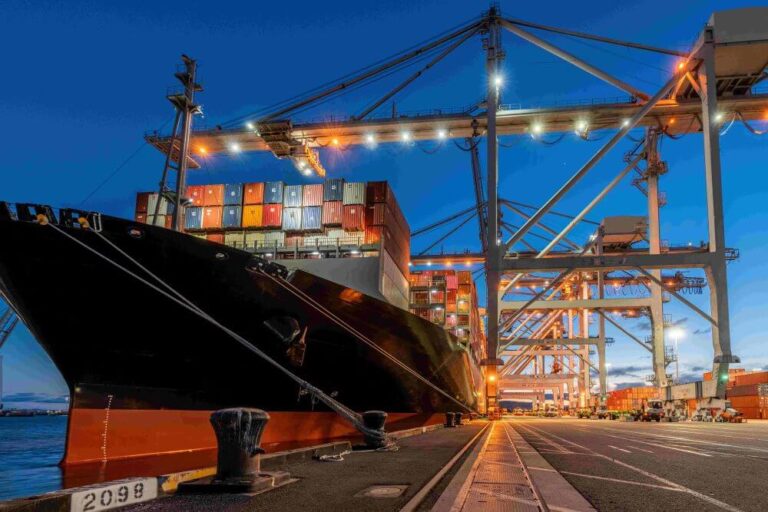Every shipment you send is more than just cargo. It’s a promise to your customers. Choosing the right way to move that cargo can mean the difference between satisfied clients and missed opportunities.
For most businesses, the decision comes down to two main options: sea freight or air freight. Each has its strengths and trade-offs, and the best choice depends on your priorities. If you’ve ever wondered which path makes sense for your business, this guide will walk you through the key differences and help you make a smart, informed decision.
Speed and Delivery Time
Time is often the first factor business owners think about. Air freight is the clear winner when you need goods delivered quickly. Depending on routes, shipments can reach their destination in one to three days. This makes air freight the go-to option for urgent deliveries like medical supplies, fashion items tied to seasonal demand, or high-value electronics.
Sea freight, on the other hand, is slower. Crossing oceans typically takes weeks, not days. However, if your goods aren’t time-sensitive, this slower pace may not matter. Many industries regularly rely on ocean freight because they plan their supply chains months ahead. For example, retailers shipping large volumes of furniture or manufacturers importing machinery often choose sea freight because timing is less critical.
Cost Considerations
Air freight is the pricier option when it comes to transporting goods. Rates are much higher per kilogram, which makes it impractical for bulky or heavy shipments. Even small loads can quickly add up in cost, putting a strain on your budget.
By contrast, ocean freight offers a far more cost-effective solution. Shipping by sea usually comes at a fraction of the price of air freight, especially when you’re moving several containers or booking a full container load. For businesses that ship in bulk, this can translate into significant savings.
That said, ocean shipping isn’t free from challenges. You’ll need to account for port fees, customs clearance, insurance, and storage. On top of these fixed expenses, fluctuating ocean freight rates can also affect your bottom line. Managing all these factors alone can be overwhelming.
One way to ease this burden is by turning to experienced forwarders like Apollo Logistics sea freight. A trusted partner helps ensure shipments remain cost-effective and well-coordinated, reducing the risk of costly surprises and giving you greater peace of mind.
Cargo Type and Suitability
Not every product has the same shipping needs, and the type of goods you move plays a big role in deciding between air and sea. Sea freight is the natural choice for oversized or heavy items such as cars, building materials, or industrial equipment. It’s also ideal for non-urgent bulk goods, from textiles to raw materials. Heavy shipments often move more efficiently through ocean transport.
Air freight, on the other hand, is better suited for lighter, high-value, or perishable items. Think pharmaceuticals, luxury goods, or fresh produce that needs to reach markets before it spoils. Airlines also enforce stricter limits on hazardous materials, meaning some goods can only travel by sea.
By matching the nature of your cargo to the right mode, you avoid delays, compliance issues, and unnecessary expenses.
Reliability and Risk
Airlines typically run on tight schedules, which makes air freight more reliable for transit times. Weather disruptions happen, but flights usually resume quickly. That’s why businesses needing precision in delivery dates often choose air freight.
Sea freight schedules can be less predictable. Storms, port congestion, or labor strikes may cause delays. However, technology is improving the tracking of ocean shipments, giving you better visibility into your supply chain.
Many carriers now use AI solutions to forecast delays, optimize routes, and provide real-time updates, making sea freight more transparent and dependable than ever. While air freight offers reliability in timing, sea freight remains a steady option for cargo that isn’t tied to strict deadlines.
Environmental Impact
Sustainability is now a key part of business decisions. In this area, sea freight has the advantage. Ships emit greenhouse gases, but they move far more cargo per trip, making them more fuel-efficient per ton than planes.
Air freight leaves a much larger carbon footprint. For businesses prioritizing sustainability, sea freight offers a greener choice. Some shipping lines also use “slow steaming,” where vessels travel at reduced speeds to cut fuel use. Others provide carbon offset programs to balance emissions.
Factoring sustainability into your shipping choice benefits the planet while strengthening your reputation with eco-conscious customers.
Flexibility and Reach
Sea freight connects the world’s major ports, making it a strong option for large-scale global trade. Reaching inland destinations, however, often requires extra transport by road or rail, which can extend timelines.
Air freight, while limited in cargo size and weight, offers broader reach. Planes can deliver goods to landlocked areas and remote regions where sea freight can’t go directly.
Since each option has its strengths and trade-offs, many businesses use a hybrid approach to get the best of both. For example, bulk shipments might travel by sea to a main port, then smaller, urgent consignments are flown to regional hubs. Providers that offer complete freight services or bundled logistics services can help manage these mixed approaches smoothly.
Conclusion
Both sea and air freight have clear advantages, but no single option works for every situation. Air freight makes sense when speed and precision are critical, while sea freight is often the smarter choice for bulk shipments and businesses focused on cost savings.
The best decision comes from weighing cost, speed, cargo type, reliability, and environmental impact against your business goals. By making shipping a deliberate part of your strategy, you can build a supply chain that supports growth and consistently meets customer expectations.


